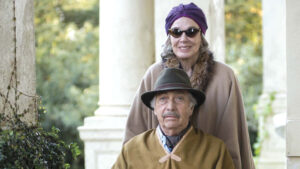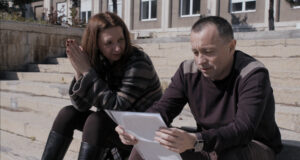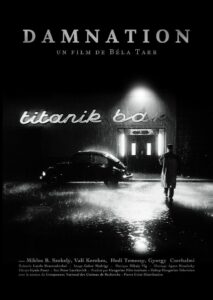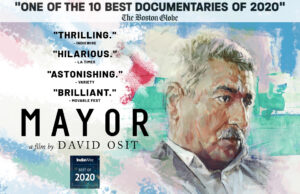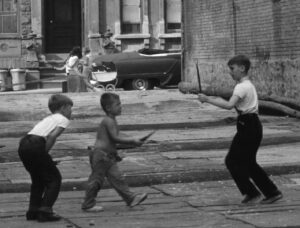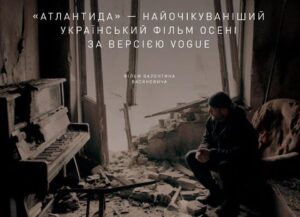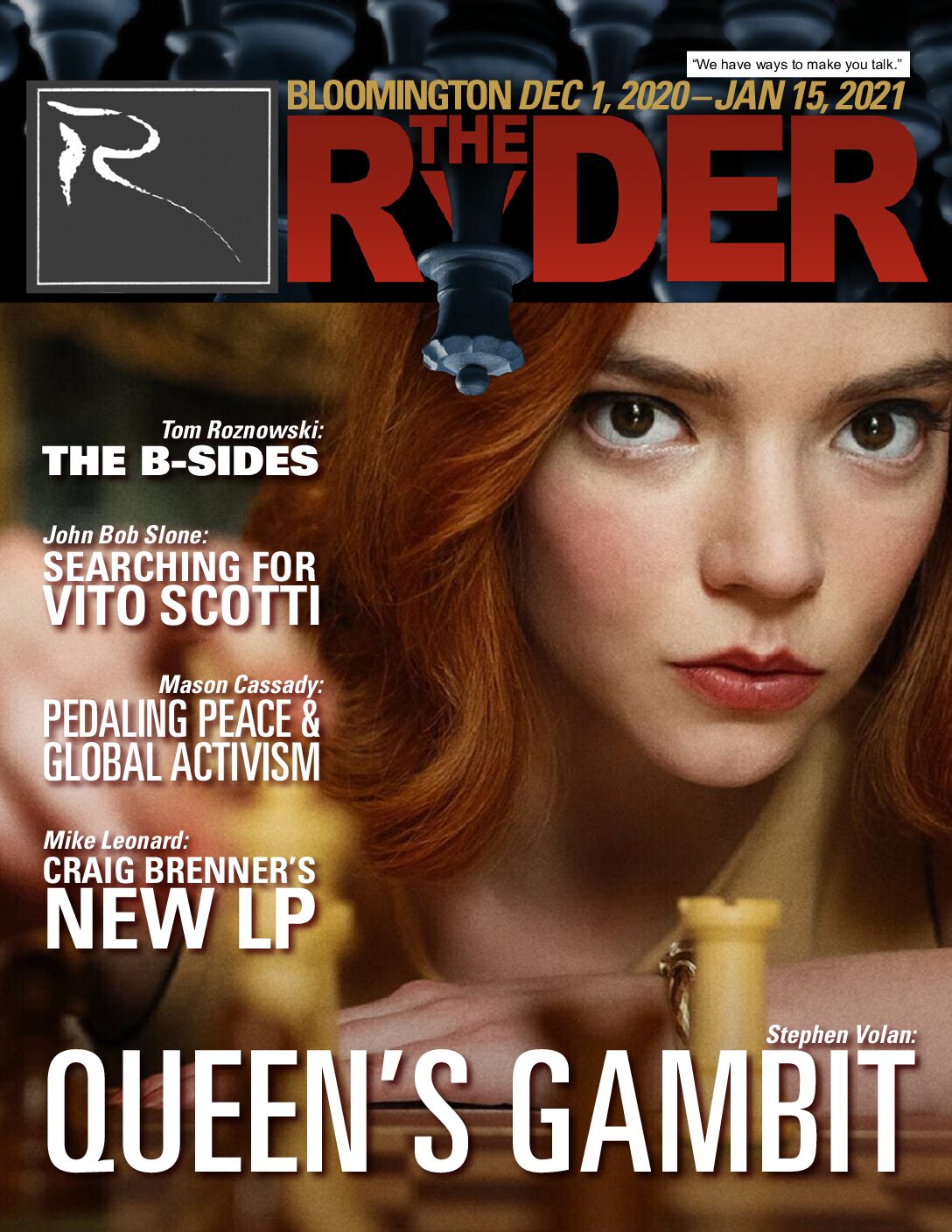Census Taking in a Divided America

by Mason Cassady
While perusing the stacks at the Monroe County Public Library on a brisk winter day in 2019, my eye couldn’t help but be drawn to a man in a makeshift booth, adorned with a sign indicating he was hiring for jobs that paid a $20-$25 hourly wage, courtesy the US Department of Commerce. He fit the bill for what I’ve always imagined a U.S. Government employee to be — age somewhere in his sixth decade, dressed casually in a plaid button-up shirt and khaki trousers, and possibly the whitest shade of pale a white man can be. I decided to investigate further, and the man — The Man? — peaked my interest by enthusing about a flexible schedule, low on-the-job oversight, reimbursement of gas mileage, a higher hourly wage than ever offered before (underscored with a hand motion toward the large sign)… and a chance to help the country.
Unlike the military, the job didn’t come with combat pay, but for anyone who’s volunteered to go join up in the once-every-decade Army of the Census, after you’re done, you surely feel like you’re due some kind of special bonus.
Every ten years, the US Census Bureau hires hundreds of thousands of citizens as enumerators, a short-term position whose tasking is to collect household and demographic information from area residents. While much of the census data is collected by mail, enumerators are inevitably deployed to reach out to citizens who, for whatever reason, didn’t get their questionnaires back to Uncle Sam. This year’s census was especially problematic for various reasons: Due to Covid-19, the 2020 count started months late, and due to particularly contentious political disagreements and funding issues, it ended early. Though I remembered hearing tales during the last census about all manner of craziness enumerators were forced to deal with — usually reports of rifle-brandishing homeowners or extremely defensive animals (in 2010, an enumerator’s encounter with a vicious duck left her with fifteen bite marks and a battery of tetanus shots) — as the alabaster bureaucrat made no mention of itchy-trigger-finger residents or surly waterfowl, I left the consultation feeling optimistic about my prospective Covid temp job. Later that day, I completed an online application to become an enumerator for the 2020 U.S. Census. Some weeks later, I was hired, thus becoming the latest in a long and distinguished line of citizen-workers without whose work America couldn’t exist.
In 1790, George Washington’s administration presided over the first national census, with Washington assigning then-Secretary of State Thomas Jefferson to marshal a small cavalry of equestrian enumerators to saddle up and tally America’s citizenry in the name of establishing our first Congressional districts. While Jefferson’s mounted tabulators had recorded a total of 3.9 million people in the young nation, the numbers were disingenuous: In addition to excluding Native Americans, the enumerators also hewed to the letter of the Constitution, which then included a sop to the South: Designed to placate white racist sensibilities and ensure political power through numbers, Virginia and North Carolina, with their large slave populations and by way of example, accounted for just over 20% of the entire US population. The Three-Fifths Compromise, though eliminated in letter by the 13th, 14th and 15th Amendments, has hung around in spirit ever since, in some places more than others.
Fast forward to 2020. This year’s census estimates a population of 330 million residents (up 22 million since 2010) in the United States, with census-related issues such as district-packing and citizenship questions as contentious as others that have come before and maintain. The changes that have occurred since that initial census are mind-boggling; our world would be unrecognizable to those horsemen conducting the census in the 18th century. (We can but imagine how those temporally closer to the Second Amendment and deadly epidemics circa 1790 might consider their ostensible latter-day Tea Party-cum-Trumpist inheritors in covid-defined 2020.) I wondered if the census was more efficient in Jefferson’s day of horseback riders on dirt roads with old maps and landmarks, in contrast to our efforts today, fueled by big data, smartphones, and 5G connectivity. But that’s like comparing the visuals of Atari’s Pong to the virtual reality of Star Trek on the Oculus Rift.
The experience of Census workers can be wildly different based on a number of variables, geographic location chief among them. Employees in metropolitan areas walk city streets and dodge traffic, while census takers in rural regions traverse backroads with their heads on a permanent swivel, alert to potential sneak attacks from dogs and other hidden dangers. The bulk of my cases were found in rural areas, with the occasional visit to addresses in medium and small towns of southern Indiana — a mix that gave me a glimpse into different and diverging demographics of modern America. What I saw is a divide that looks a bit like two icebergs drifting farther and farther apart — a reflection of political climate change that, like it’s environmental cousin, seems only to be accelerating.
In an era of information confusion, flooded with phone scams and social media misinformation and foreign disinformation on the Internet — which can sometimes feel like a Wild Wild West of Trolls — upon seeing my approaching figure, many of my fellow citizens looked at me skeptically, sometimes even with hostility, as if I were some sort of government operative actively working to take away their freedoms. Even with a badge, a bag tagged with “U.S. Census Bureau,” and a damn good elevator speech about the purpose of the census, I nonetheless sometimes found myself on the receiving end of the hairy eyeball. In such cases, I reminded residents that the primary reasons for the census is to reapportion the House of Representatives and allocate federal funding to communities for things like infrastructure, transportation planning, and educational or community facilities. Yet such words did little to soothe the generic seething Census cynic. When the questionnaire prompted me to ask a woman about home ownership, she all but hollered, “THIS INTERVIEW IS OVER!” and proceeded, successfully, to slam the door in my face.
Apparently I had found the limits of Hoosier Hospitality.
Stories from the Road
Prior to beginning the fieldwork, I was required to complete 15 hours of online training on how to do the job of an enumerator — about 12 hours too many, but at $20 an hour, who was I to complain? After I finished training, I moved onto the next stage: conducting the first handful of field assignments under the supervision of my manager.
My supervisor and I set out one morning in her Toyota Prius to fight the good fight of counting people in the name of democracy. On our first home visit, the respondent opened the door with a beer in hand at about 1pm on a Tuesday. He was a middle-aged man, balding head with a five o’clock shadow and bags beneath his eyes. Rather energetically, he invited us into his home to complete the survey, but we courteously declined the offer due to restrictions of the job (among other concerns — is he just a guy with a beer or a Hoosier version of Leatherface?). The man was in a hurry and said he only had about 5 minutes. I thought to myself, But you’re drinking a beer… chill, bro, and we told him a white lie and said we could complete the survey within five minutes (it really takes ten minutes or more) and so I began firing questions from the questionnaire his way.
About two minutes in, he said, “You are not gonna complete this in 180 more seconds, bud. Come on back another time.” I agreed without hesitation. Demoralized, my supervisor and I walked away, started up the car and drove onward towards new horizons, to new addresses, and with determination not unlike Ash Ketchum in the theme song to Pokémon. “Gotta catch em all!” indeed.
Next up: I ascended a rotting wooden staircase to attempt an interview at a house. Knock knock. (Who’s there? I thought to myself). No answer. Knock knock. Nobody. Dejected again, I placed a Notice of Visit (NOV) slip in the door and began to walk down the wooden staircase. About nine steps down my right foot, along with the whole step, slid out beneath me. My clipboard and all my papers took flight as I fell backwards. My arms flailed, along with my pride, as my supervisor witnessed the whole shebang from the comfortable seat of her environmentally-conscious automobile. I instinctively hollered out, “I’m okay!” in an act far too common among those with XY chromosomes (hiding pain and acting tough, this would be). There I was, on the ground on my first day of fieldwork, a fresh bruise forming on my arm. Morale was low, and I was losing my optimism for my U.S. Census stint.
Whether it was pity, delusion, or a desperate need for census workers, my supervisor certified me as competent, and gave me the go ahead for solo census expeditions.
Whenever I checked my smartphone for caseloads at the beginning of each day, I never knew what to expect. As I drove and walked along rural roads eerily resembling those in Deliverance, I was frequently reminded by locals of the death of a census worker in the year 2000. Outside a rural cabin in Brown County, a woman was killed by a pack of dogs while on the job. Each time someone brought that incident up, I cringed and carried on to the next address, hoping I wouldn’t fall victim to a similar fate. I enjoyed both the adventure and the novelty, which made the job interesting to me; but the chance, however slim, of getting shot, or attacked by a canine while on the clock, gave my adrenal glands permission to flood my system with stress hormones.
One day, I pulled up to a house that had a sign that said, DON’T WORRY ABOUT THE GUARD DOG. WORRY ABOUT THE HOMEOWNER WITH A GUN.Not much to leave to the imagination there! Three dogs in the area were barking in my direction; humans were nowhere to be seen. The dog-loving side of me thought, “How cute, these dogs are saying hello!”. But just in case I was wrong — and remembering the great admonition that discretion is the better part of valor — I did a cost-benefit analysis of the situation: multiple canines and an uninviting sign vs. Helping the Nation.
Concluding that neither man, beast, nor nation would ultimately be well-served by any number of accidents that might follow cracking my car door to say “Good doggies,” I fired up the engine and got back onto a gravel road sandwiched between deciduous hardwood trees in an Indiana forest. About one hour later, my caseload app led me to an address on a road I had lived on in my diaper days. I skimmed over the case notes (prior enumerators can leave comments on addresses that they have visited) which said something about cats; I’m cool with cats, I thought to myself, and so I proceeded down a long driveway through the understory of forest foliage.
I closed my car door, turned the key, put the pedal to the metal, and that banjo tune from Deliverance just randomly popped into my head.
At the end of the drive there was a house. The yard was totally fenced in. Within that fence, I saw about 25 cats lounging around. I opened my car door and immediately the cabin was permeated only to be nearly overtaken by the overwhelming odor of feline waste. As particles in the air shot up my nostrils, I thought about toxoplasmosis, a parasitic disease found in the cat family, that can cause numerous unwanted symptoms, including crazy cat lady syndrome (well, the verdict is still out on that). With no car in the parking lot, and a fence that basically said “don’t even bother,” I closed my car door, turned the key, put the pedal to the metal and that banjo tune from Deliverance just randomly popped into my head.
Down the road, I turned into a parking lot of an address on my list. A woman stood sternly by her house with a darting gaze in my direction and her hands tight to her hips. I parked and was momentarily frozen — not unlike a deer in the headlights — as I wondered how this woman would receive me. I opened my door, stood up and, lest I be taken for an armed, jackbooted, freedom-hating thug, hollered, “I’m with the Census!”
The woman took a few steps in my direction, lifted up her right arm with her pointer finger sharply pointed to the sky and yelled at the top of her lungs, “GET OUT!!”
“But this is my job!” I yelped, my voice suddenly cracking in a way it hasn’t since puberty.
She advanced slowly but deliberately, flames in her eyes. “You’re the sixth census person to come to my house,” she fumed. “I done did the interview!!”
I peered down at my government-issued iPhone 8, asked for clarification on the address, and then realized I was at the wrong address. I apologized for the blunder and, much to my pleasant surprise, with that, she warmed up. She told me her name, and I asked if it was Italian. “It sure is…” she replied, as I informed her of my own Italian heritage. She said with a smile, and maybe a wink, “I can tell, we can pick each other out from a crowd.” Then she went on, sans prompting and in a quite Midwesternly way, to unload the gossip on all the residents of the entire block.
I decided she would be a good “proxy,” enumerator lingo for utilizing a neighbor to retrieve information on a resident that is not home. Using the proxy always felt a bit like I was speaking to a snitch or interrogating someone to catch the ringleader of some nefarious group, which is of course ridiculous; but for some people, the combination of disconnect from and distrust of society is so great I didn’t envy the US Postal Service mail carriers working these rural routes.
Not all interviews were tense, though. One of the more benign, if not charming, interviews occurred with a woman in her eighties. As we went through the questionnaire at a leisurely pace, she answered each question without concern, in an accent as sweet as apple pie, and then began to inquire about my life outside of the Census. I shared a few stories from my traveling life, and then she asked, “Do you have any experience with house painting?” This was more than a bit out of left field. “Very little,” I replied, “but yes, I do” She then asked if I would be interested in painting the exterior of her home because, “I got a few estimates, and golly, they are high!” I thought about the offer for a moment, kindly declined, and carried on with my day surveying Hoosiers.
Another day, I’d glimpsed a woman wearing a pink gown with a floral pattern watching me park nearby her home. She began walking toward my car. She moved at the speed of an Eastern Box Turtle. When she got to my car she said, “Do I know you?” I replied, “I don’t believe so,” and then I informed her of my official enumerating duties. She too, went on to tell me all about the area, and eventually told me, with a giggle, that she was 92 years old; or, as I thought, just over nine census’ old, with her first being the 1930.
While conducting fieldwork, I was impressed and frightened by the creativity of No Trespassing signs. Two of my favorites were: Trespassers will be shot. Survivors will be shot again; Due to High Cost of Ammo, There Will Be NO WARNING SHOTS FIRED. Signs containing such contemptuous gun messaging toward other humans seems to be unique to the American experience, and one more thing to keep us — some of us, anyways — up at night.
When I saw signs of that sort, I imagined the contrast in experience of a census worker in a place like Finland, where they have jokamiehenoikeus, which translates roughly as Everyman’s Right, written into the law: it allows anyone to walk, forage or camp, at a certain distance from a house, on anyone else’s land. The only restrictions are on hunting and cutting timber. Finland is not unique in such right-to-roam laws; other nations like Denmark, Norway and Scotland have similar laws (with a few more limitations compared to Finland). Conversely, in the United States, we have castle doctrines, or defense of habitation laws, which in certain states gives homeowners the protected right to shoot trespassers dead.
Each employee of the 2020 census was issued an iPhone 8, which clearly indicates addresses where there have been dangerous encounters in the past: a yellow symbol indicates the need to yield caution while a red symbol signifies danger, do not attempt. The implementation of iPhone’s among census workers might be the most effective way to decrease incidents of violence while on the job. And while conducting the census in the year of a heated presidential election, where one side is fuel for gun-toting, “get off my land,” Americans, I was sure to give no trespassing signs full attention and respect as I marked the address as un-attemptable, and left the property swiftly with all my faculties, limbs and organs intact and in working order.
Counting the number of residents in a country of 330 million people is extremely complex. As noted previously, and without shame, I repeat: the census is vitally important for the allocation of funding to communities across the country. But that doesn’t stop conspiracy theories. Some respondents, skeptical toward any and all things governmental, looked at me as if I were a wolf in government-issued sheep’s wool, preparing to use their information for diabolical means. Contrary to what some residents may think, answering the census is mandated by the Constitution and is imperative for any nation that considers itself a democracy.
Working as a census enumerator can feel like a thankless job due to unpleasant interactions with some residents. It had similar tones to working in the service industry, but with the potential for more guns and unwanted interactions with furry-and-not-always-friendly animals. But there was one moment, when I was walking down the street, and a woman across the road cheered, “Yay! Go Census!” That made my steps a bit lighter that day, and reminded me of the value of the job. If you meet a Census worker, now or ten years down the road, give them a nod; the work they do ripples out and affects us all in innumerable ways. Counting the population equates to fair representation in the House and more equilibrium to the allocation of funding for things like schools, roads and health facilities centers in communities. Which, to challenge a slogan I hope I never hear again, are the things that actually make America great.





